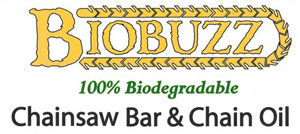Reduce, Reuse, Recycle
REDUCE: I sell information, not tree work.
My business is providing arboricultural information for a fee. The information I provide can enable a person to be a better and smarter consumer when selecting a tree service to do tree work...if work is needed. I do provide general pruning guidelines or, if requested, specific information on where each cut should be made. Invariably, my advice results in a lower total cost to the consumer because no unnecessary tree work will be done.
Green leaves make food (carbohydrates) for a tree through photosynthesis. The carbohydrates are stored in the wood. Excessive leaf and branch removal stresses a tree by removing its stored carbohydrates and its carbohydrate production potential. Excessive removal of lower branches and interior branches can raise the center of gravity of a tree or branch, making it less stable in the wind. It is important for the health and stability of a tree to have all pruning work done correctly.

Recently, I visited a home where the resident was about to contract a tree service for a "bargain" $1,600 offer to "prune all day." After looking at the trees, my conclusion was that no tree work was needed. There wasn't even a significant amount of dead branches that needed removal. Although this is an extreme example, it is unfortunately not that uncommon.
When having trees pruned, less cutting is better than more. Unfortunately there is a tendency of some tree services to push for tree removal when some corrective pruning may be all that is needed to make a tree safe.
Be a good consumer. Become informed before you contract for tree services.

REUSE: I bet we could use that to...
By nature or birth I am a very thrifty person and try to reuse materials, tools, and equipment without sacrificing safety or usability. I often keep things a little too long, but many times I am able to find a good use for them even after I thought that the lifespan of it might be completed. Tarps, work pants, and old ropes are just a few things that I find difficult to throw away. You will probably see me use a tarp with many holes in it for a base cover to pile wood chips on to protect a clients driveway. You may see an old pair of my pants being used as a rag, an old rope used to hold up a bird feeder, or to tie up a bundle of brush. These are just a few simple ways I try to reuse products in my small business.
I always find it satisfying to leave some or all of the green waste that is produced in my work on the homeowners property. With local ordinances, critical neighbors, and landscapes unfit for wood products or storage, it can be a challenge. Clients seem to find
my ideas of leaving some type of wood product on site to be reused in the landscape appealing and can reduce the cost of tree services. Some easy and inexpensive ways to reuse the green waste are to cut and plane a bench from strong limb wood, carve out a chair with smaller stumps, make a woodpecker home and habitat left from a 15'-20' standing totem, use nutrient rich stump grindings in gardens or flower beds, or place wood chips around the base of other trees in the yard. I know one client who informed the neighborhood kids to use her large elm stump as a base safe area in games that they played. More costly options include hiring a wood carver to create a masterpiece, creating a fence from smaller branches, or using new chips as a base for a rain garden or flower bed.


I smile every time I think of this story: years ago I taught a summer school class to English as a second language students in Robbinsdale, MN. A friendly and “new-to-American ways” 18 year old Liberian boy asked me what my plans for the rest of the summer were. I stated to him that I climb and work with trees. He immediately became more interested. I soon found out that his uncle back in Liberia was a tree climber. He began to tell me how his uncle used a machete, was barefoot, and never used a rope when ascending a tree. I gasped...no rope? bare feet? Wow. He asked me about the wood and people using it. I stated that nearly all homeowners have no need for the wood that is cut. He gasped, “They don't use it for heat, for cooking, for friends? People pay you to remove their wood?” He stated that in Liberia all wood stays on the property and that the leaves, branches, limbs and trunk are all reused.” Now that's perfection in reusing wood products.
RECYCLE: We are here when you need us.
Chainsaws: Nearly all tree companies use a petroleum base chain saw lubricant. These lubricants are great products that prevent equipment wear and tear. However, petroleum lube is a poison to trees, soil, pets, and water. At Treehugger, we
don't want to leave a print after we leave the work site. That's why we use a plant based bio- degradable chain saw lubricant called Biobuzz that is safe to humans and plants It puts a bit more wear and tear on our saws and equipment, but we believe that it is worth it for the protection of our natural resources. Saws can be replaced.


Mulch: All tree trimmings and green waste are recycled into organic compost or mulch. These recycled materials are later used to enrich our soils by supporting local farmers, landscapers, and energy producers; thus conserving precious landfill space and giving back to the earth.
Sawmills: We work with local sawmills to preserve the urban wood to be milled into custom furniture. The goal of Wood From The Hood and Treehugger Tree Care, Inc. is to provide a source for local, sustainable lumber, with the least permanent impact on our environment. Please visit Wood from the Hood's website at: http://www.woodfromthehood.com/ to see a selection of their great products and work that they are doing.
Fuel Savings: Many tree companies bring an excess of large trucks and vehicles to complete the job because of the necessity of transporting
dump truck, chipper, crew, supplies, and stump grinder to multiple job sites each day. Being an owner operated company, we bring only the equipment needed without needing an extra vehicle. We might even bring a bike, so that a truck can stay overnight at a job site. In this way, we consume less fuel and decrease our environmental footprint.







